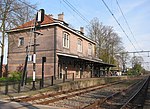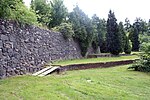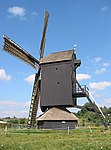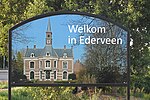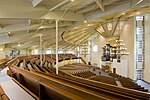Lunteren

Lunteren is a town in Gelderland, the Netherlands. It has a railway station on the line between Amersfoort and Ede. It is well known for three conference centres in the vicinity, including Het Bosgoed, which mostly hosts academic conferences and De Werelt Congress Hotel. It is also famous because the Geographical Center of the Netherlands is located northeast of the village, and because the National Socialist Movement in the Netherlands ("NSB") held their annual Hagespraken (propagandistic open-air meetings) there between 1936 and 1940. In 1938, the NSB built what is known as the Muur van Mussert ("wall of Mussert") there, which was planned as the first step in a large conglomeration of buildings and monuments for the party.Lunteren was a separate municipality until 1818, when it was merged with Ede.
Excerpt from the Wikipedia article Lunteren (License: CC BY-SA 3.0, Authors, Images).Lunteren
Valkseweg, Ede
Geographical coordinates (GPS) Address Nearby Places Show on map
Geographical coordinates (GPS)
| Latitude | Longitude |
|---|---|
| N 52.087222222222 ° | E 5.6219444444444 ° |
Address
Valkseweg 12A
6741 ZL Ede
Gelderland, Netherlands
Open on Google Maps
